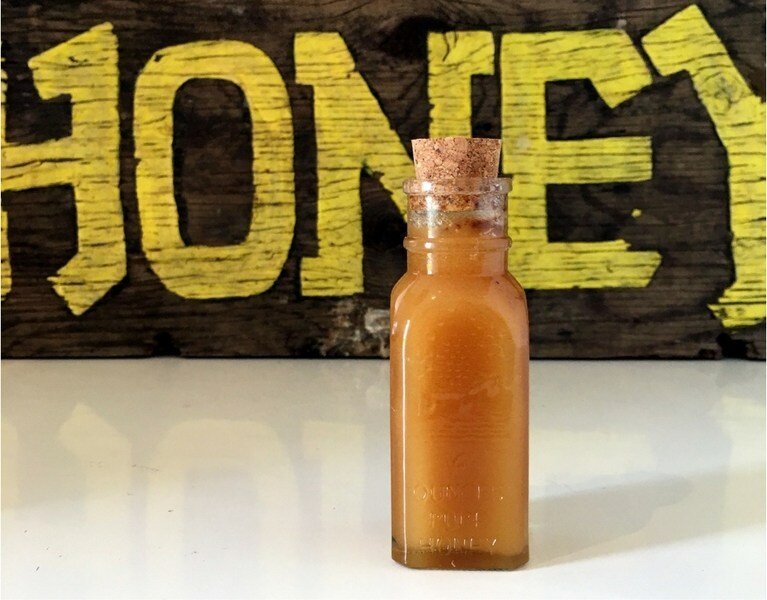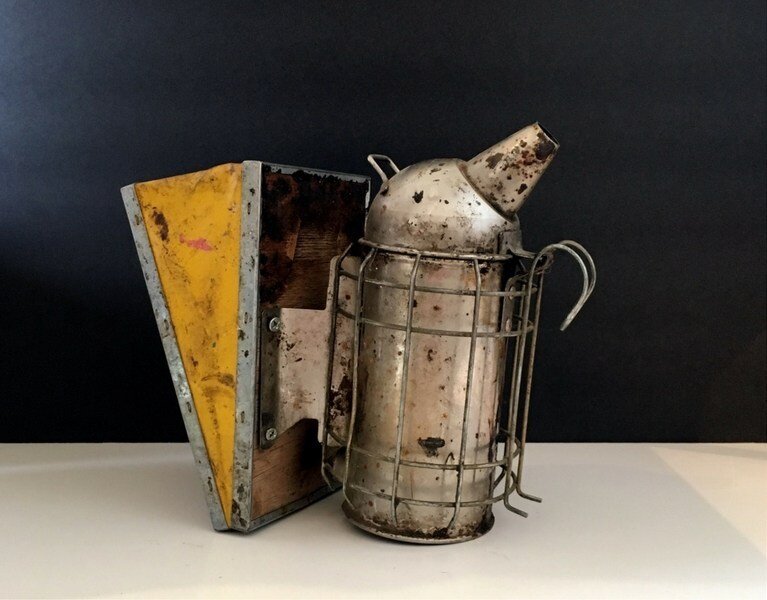Local Raw Honey
I buy raw honey by the gallon and I use it in many ways. I am, however, more of an obsessed consumer than an aficionado in my knowledge of honey.
There is a quote that my kids and I like, “Everyone you meet will know something you don’t know.” I love learning so I decided to get more information about honey. I called a local honey farm at the end of the season last summer and met with the farm owner, whose honey is always stocked in my pantry. To say they knew somethings I didn’t know would be a gross understatement.
I had the joy of spending the afternoon with Mary Smouse and her daughter, Chris. We talked about their family honey farm, which I learned is also called an apiary. Mary Smouse, her husband, Dave, and their family have over 40 years of beekeeping experience. It’s evident that beekeeping isn’t just a job for them, it’s a passion and an art.
“We’ve been doing this for 40 years.” Mary Smouse
As we stood in their small honey shop, the late summer heat giving way to the fresh breeze that was promising a change of season, they talked and laughed about how they started. Mary’s father-in-law first purchased a bee hive kit from the Sears, Roebuck Catalog well over 40 years ago. What followed became a family business and a passed down the heritage of beekeeping.
“You always learn something new about bees.” Mary told me, echoing the sentiment of our favorite quote. We walked around the property and she pointed out several hard working bees and taught me about the structure of bee colonies. For example, I learned how queens are selected by the colonies and treated as royalty from the time they are a larva. They are fed royal jelly (a bee secreted substance) as they are groomed to be queen.
“What followed became a family business and a passed down heritage of beekeeping.”
“The sweet, sticky gold woven between a maze of carefully constructed wax hexagons was a delicious surprise.”
Back in the honey shop I was handed a piece of honeycomb and told to chew it like gum. I did. The sweet, sticky gold woven between a maze of carefully constructed wax hexagons was a delicious surprise. I had never considered that you could chew it before!
They also brought out samples of the different types of honey that their bees produce. There was wild flower, clover, raspberry, blueberry, buckwheat and pumpkin varieties and I noticed a distinct color difference between the types of honey. Some were gold and clear, and some were as thick and dark as caramel.
Another thing I learned was that the color and flavor of honey varies depending on the pollen the bees use and the time of year it was gathered. Buckwheat honey, for example, is a later summer crop and so the color is darker and the flavor more robust than a clover or a raspberry honey, which is in season earlier in the summer.
We talked about worldwide bee issues, like colony collapse and I was glad to hear that their bee colonies have never suffered colony collapse. As a pest control company owner, it seems rather contrary for me to say that we want to keep bees around. Honey bees are not simply pests to be discarded. They are a contributing member of our world and should be taken care of. For example, royal jelly, which bees make, is used in medicine that help a variety of illnesses and honey has cosmetic, medicinal, and therapeutic value.
“The color and flavor of honey varies depending on the pollen the bees use”
Some bee farmers will help relocate bees if they have taken up residence in a less than ideal location. Harvest Valley Pest Control has been able to call local bee farms and have them help us safely move bees to a new home. This is a great way to solve a honey bee infestation problem if you ever find a hive under your roof eaves, garden shed or in your child’s tree house.
The information about bees is outstanding, and the things I learned form the Smouse family about honey was inspiring. They will start pouring new batches of honey soon and I’ll be in line for a gallon or two.
If you have a honey bee colony that needs relocation, you can inquire here.
If you would like to learn more about bees and honey, check out this book or this amazing calendar.
For more on queen bee selection, check out this article here.







